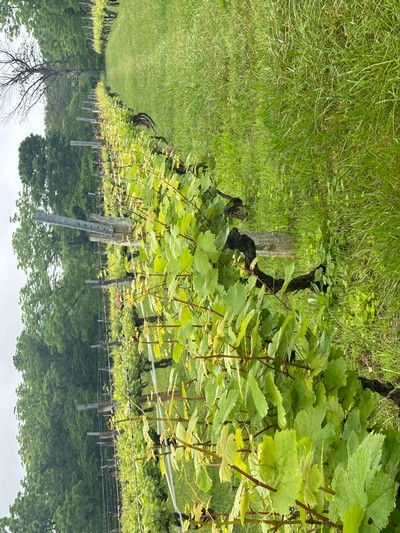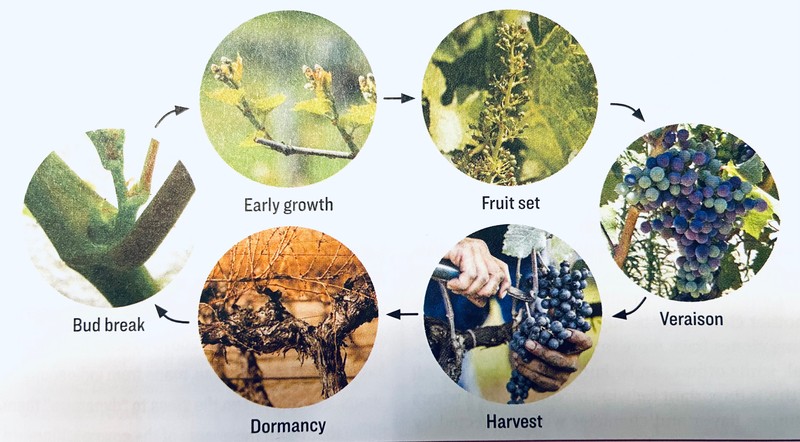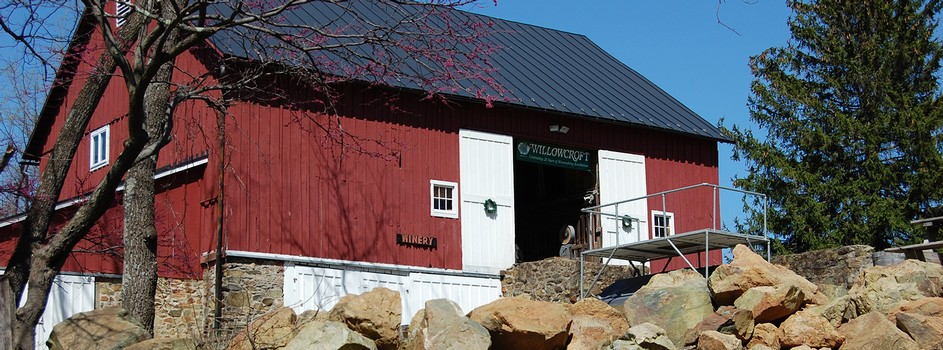News
Welcome to the Willowcroft blog! This is where we will be highlighting events and news from around the winery.
Rooted in Resilience: The First Grapes at Willowcroft and Their Legacy Today

When Lew Parker first planted grapes at Willowcroft Farm Vineyards in 1980, there was no roadmap—only a dream, a hillside, and the hope that Virginia could one day rival the great wine regions of Europe. At the time, the very idea of growing European grape varieties, known as Vitis vinifera, was considered risky, even reckless, by local advisors from the Virginia Extension Service. But like many pioneers, Lew believed that the best way to grow was to take a chance.
The first vines planted, Cabernet Sauvignon, Riesling, Chardonnay, and Seyval, didn’t make it. A harsh introduction to the challenges of Virginia viticulture resulted in the entire initial planting failing. But that didn’t stop Lew. He replanted in 1981, and this second planting survived. Many of those vines continue to thrive today in our home vineyard, their deep roots telling the story of Willowcroft’s perseverance and vision.
Each variety chosen in those early days represented a bold step toward redefining what Virginia wine could be:
- Cabernet Sauvignon, a bold red grape from Bordeaux, was selected for its potential to bring structure and aging ability to Virginia reds.
- Riesling, a grape native to Germany’s cooler climates, offered aromatic white wine potential and acidity that could balance Virginia’s warmth.
- Chardonnay, the queen of white grapes, was a natural choice for producing elegant, versatile wines.
- Seyval, a French-American hybrid, provided insurance—hardier and more disease-resistant, Seyval could deliver reliable harvests when other vines struggled.
At the time, little was known about how to cultivate these varieties successfully in the unique microclimates of Virginia. It was all trial and error. The soil, slope, canopy management, and disease pressure were all things that had to be learned the hard way. But these early choices laid the foundation for what would become one of the most exciting wine regions in the country.
The decision to plant Vitis vinifera was a revolutionary one. Native American grapes and early hybrids had been cultivated in Virginia for centuries, but their wines were often considered musky, overly sweet, or lacking finesse. European settlers longed for the wines of home, and Vitis vinifera was the key.
Today, these European varieties make up more than 75% of Virginia’s grape production by tonnage. They have transformed the state’s reputation from a fledgling curiosity into a nationally recognized wine region with over 300 wineries. At Willowcroft, we continue to honor that legacy by producing high-quality vinifera wines—Cabernet Franc, Petit Verdot, Chardonnay, Albarino, and yes, still our original Cabernet Sauvignon and Riesling.
What makes those original plantings remarkable is not just their age—it’s their continued relevance. Despite decades of experimentation across the state, Cabernet Sauvignon, Chardonnay, and Riesling remain cornerstones of Virginia’s premium wine scene. These grapes have proven adaptable, expressive of Virginia’s terroir, and capable of producing wines with elegance, balance, and depth.
As for Seyval, it remains a staple at Willowcroft—a reminder that hybrid varieties have an essential place in our portfolio, offering resilience and versatility, especially as climate unpredictability increases.
Walking through the home vineyard today, you can still see those early vines—knotted, gnarled, and wise. They’ve weathered frost and sun, drought and deluge. And they still bear fruit that tells a story: of vision, of patience, and of a belief in Virginia’s potential before the rest of the world was ready to believe with us.
Willowcroft is proud to be the oldest winery in Loudoun County, a cornerstone of Virginia wine’s modern era. As we continue to innovate and expand our offerings, we never forget the vines that started it all—those planted not just in soil, but in hope.
From Snow to Bud Break: The Promise of a New Season in Northern Virginia Vineyards

Northern Virginia has been blanketed by more snow and colder temperatures than usual as we find ourselves in the heart of winter. Notably, early January brought significant snowfall, with areas like Leesburg receiving more than 7 inches. While the landscape rests under this frosty veil, it's heartening to remember that the vineyards will begin their annual renewal in just about six weeks.
Grapevines are dormant, appearing as mere woody twigs amidst the snow. This essential period allows vines to conserve energy and prepare for the upcoming growth cycle. As temperatures start to rise and the ground begins to thaw, the first signs of life emerge with bud break. Tiny buds swell and burst open, revealing new shoots and leaves, marking the vine's reawakening.
Following bud break, the vines enter a phase of rapid growth. Shoots lengthen, and small, self-pollinating flowers appear. These blossoms, once pollinated, develop into tiny green berries. As summer progresses, these berries undergo veraison, changing color and beginning to ripen. The grapes reach their peak ripeness by late summer to early fall, ready for harvest.
The current winter conditions, though harsh, play a crucial role in this cycle. The cold ensures that vines remain dormant, protecting them and allowing for a more synchronized and healthy bud break come spring. So, as we navigate these chilly days, take comfort in knowing that the vineyards are merely resting, gathering strength for a vibrant season ahead. In just a few weeks, we'll witness the first signs of this transformation, a testament to nature's resilience and the promise of warmer days.
The History of Willowcroft Farm Vineyards: A Legacy Rooted in Loudoun County’s Rich Past
Willowcroft Farm Vineyards, nestled on the scenic Catoctin Mountains in Loudoun County, Virginia, is more than just a winery—it’s a living piece of history. With a residence dating back to 1789, the vineyard spans 30 acres and offers breathtaking views of the Loudoun Valley and Blue Ridge Mountains. This land, rich in history, has been home to many notable figures and families, shaping it into the cornerstone of Loudoun County's wine industry today.
In its early days, the property was owned by Lord Fairfax and later by James Simpson, with William Jenkins managing the farm before purchasing it in 1877. The Jenkins family played a significant role in the farm’s history, passing it down through generations. Over the decades, the property changed hands numerous times, moving through families like the Tiffanys, Pangles, Garretts, and Kohlmeiers, each leaving their mark.
One of the most compelling stories tied to the land is that of Jane Pohl, daughter of West Point graduate Colonel Hermann Pohl, who purchased the farm in 1946. Jane Pohl was an accomplished equestrian who defied expectations with her horse Fitzrada, a once temperamental cavalry horse. Jane’s success with Fitzrada, despite their rocky start, led to significant achievements in the show-jumping world, helping to open the doors for women to compete internationally in the sport.
In 1979, Lew Parker purchased the land and established Willowcroft Farm Vineyards, planting the seeds for what would become Loudoun County’s first winery. Willowcroft’s creation marked the resurgence of the region's post-Civil War spirits industry, which had fallen dormant during Prohibition. Today, Willowcroft is a testament to the land’s deep agricultural roots and the pioneering spirit of Virginia’s winemaking industry.
With each glass of wine, visitors can taste not only the flavors of Virginia but also a legacy that spans centuries, from the Jenkins family to Jane Pohl’s equestrian triumphs and finally to the establishment of Loudoun’s first winery.


